#Cave Hill cemetery
Explore tagged Tumblr posts
Text
A Tale of Two Cities: Travels to Louisville
A travel post at The Storytelling Blog. Because every place tells a story. Louisville, Kentucky and St. Louis have striking similarities, I think. Do you agree? #travel #Louisville #setting
Louisville, as seen from the Big Four Bridge. Sometimes a new place is much like home. I have traveled to Louisville, Kentucky twice for the Imaginarium Convention, and managed some sightseeing in the process. East on Interstate 64 for about a four-hour drive, Louisville’s fondness for fleur-de-lis emblems reminded me of my home base, St. Louis, and got me thinking about the parallels between…
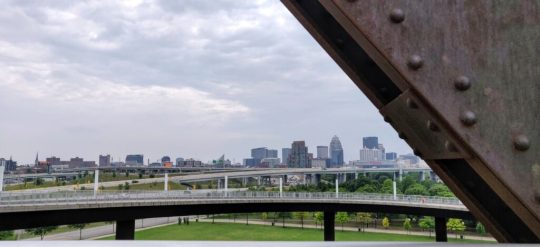
View On WordPress
#Anheuser-Bush#baseball#Beer#Big Four Bridge#bourbon#Cardinals#Cave Hill cemetery#Copper & Kings Distillery#Frazier History Museum#history#Imaginarium#Kentucky#Louisville#Louisville Slugger#Muhammed Ali#Muhammed Ali Center#Riverboat#setting#storytelling#wine
2 notes
·
View notes
Text
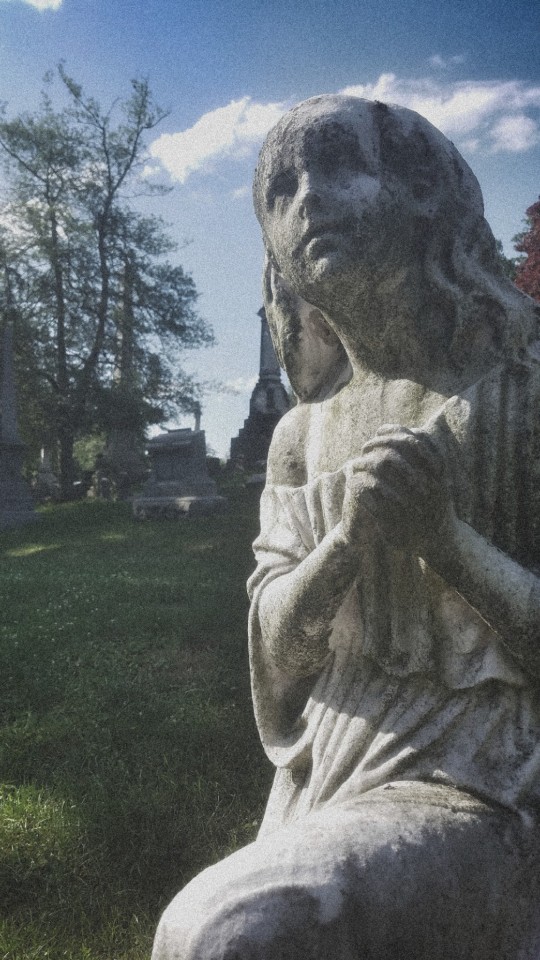
#fav place#cemetery#cave hill#k#dark aesthetic#gravestones#graves#sculpture#fksoqooqdkcn#grunge#gothcore
3 notes
·
View notes
Text
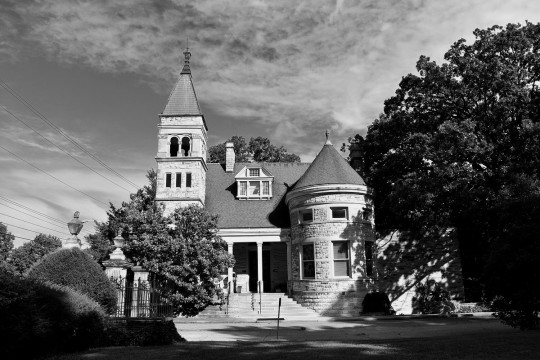

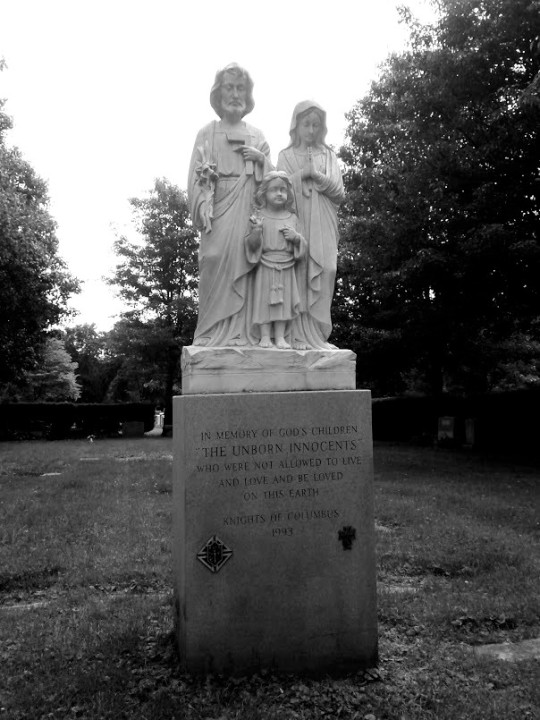
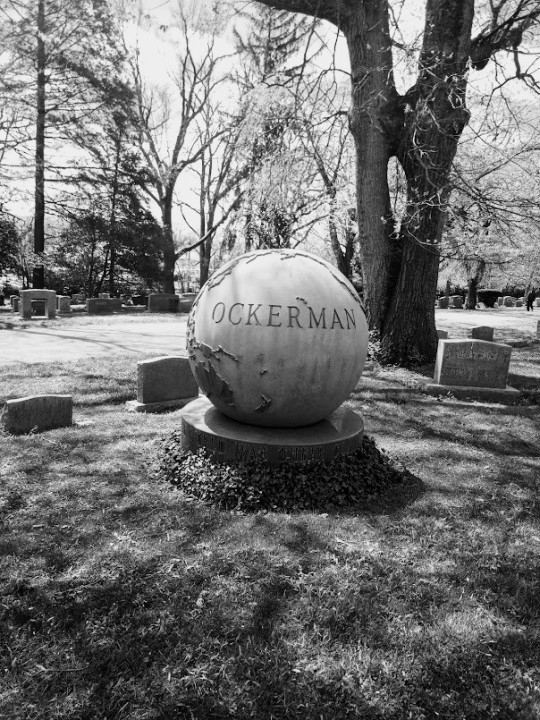
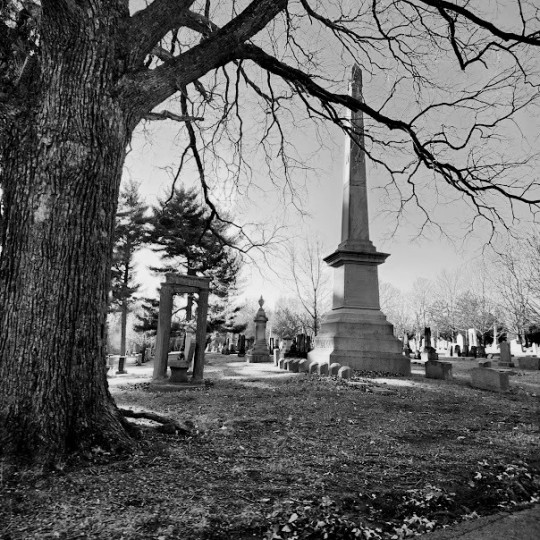
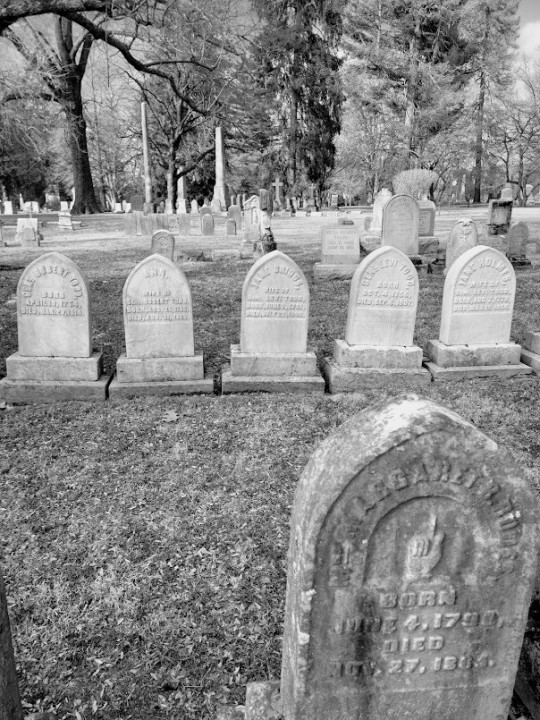
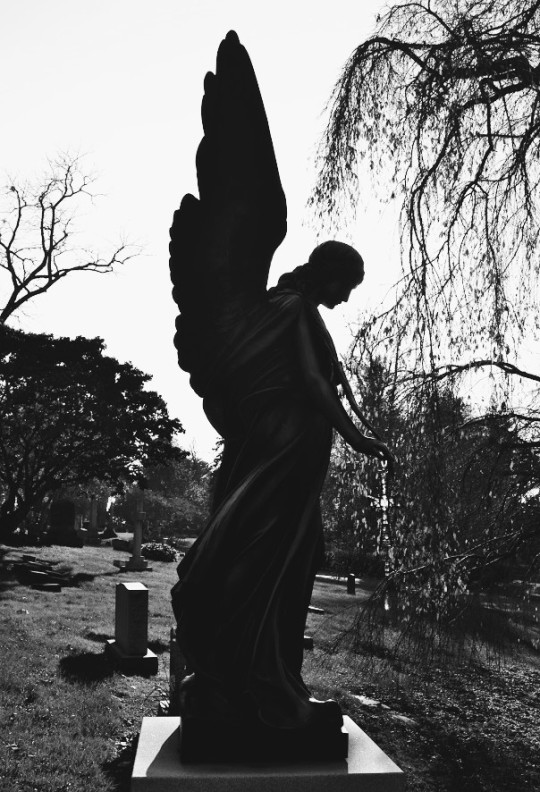
2 notes
·
View notes
Text
Some locations and structures to include in your forest
Abandoned shrine
Alchemist’s lab
Ancient ruins
Army encampment
Battlefield memorial
Boathouse
Bridge, log
Bridge, stone arch
Bridge, suspension
Bridge, wooden beam
Causeway
Cablin
Cable car station
Cairns- grave markers
Cairns- trail marker
Cave system
Caved-in tunnel
Cemetery
Clearing
Campsite
Castle (robber baron or otherwise)
Collapsed building
Dam
Dirt track
Ditch, defensive
Ditch, henge monument
Dock
Dragon’s lair
Elven settlement
Fairy ring
Farm
Ferry landing
Ford
Fort, earthen
Fort, stone
Fort, wooden
Game trail
Ghost town
Guardhouse
Haunted ruins
Hermit’s hut
Hollow hill
Hunting lodge
Hunter’s hide
Inn
Logging camp
Manor house
Mine
Monastery
Outlaw’s hideout
Overgrown ruins
Potholes
Paved road
Portal
Quarry
Railroad
Rail station
Raised platform
Roadside grave
Sacred grove
Sawmill
Sky burial platform
Signpost
Stone circle
Summoning ring
Switchback
Temple
Tollbooth
Treehouse
Troll cave
Tunnel entrance
Turnpike
Village
Waterwheel
Watchtower, stone
Watchtower, wooden
Witches’ cottage
Wizard’s tower
Zip line
#writing#creative writing#writing inspiration#writing ideas#writing prompts#worldbuilding#writer#writers#writing community#writer on tumblr#writeblr
3K notes
·
View notes
Text
╰┈➤ Get Me Out of Here
Sam Winchester x sister!reader
Dean Winchester x sister!reader
Summary: You have pretty bad claustrophobia which doesn't mix well with ghouls. Thankfully your brothers are there to help. I was thinking you're in your 20's in this but you can imagine yourself at any age.
Warning: Panic attack and mentions of death


Yes, all monsters are bad. Yes, you'd make them all go extinct with the snap of your fingers if you could. However, ghouls are the ones that you hate the most. The fact that they dig holes to eat the dead from the coffins always makes your stomach to turn. They basically live under ground or at least that's where you've seen them.
You, Sam, and Dean were in Wallace, Idaho looking into a case Sam found in the newspaper. Dean was excited to go and eat potatoes from the place where they're known for, while Sam was excited for the history of the town.
You, however, were not excited to be here. At least not after you read the case report you managed to grab from the local sheriff's office. With a disgusted look on your face, you stomped over to the diner across the street where your brothers were at. The bell on the door handle rang as you stepped in. Thankfully, Dean and Sam are very easy to spot, sparing you the awkwardness of scanning the crowded room like a lost tourist.
You walked over to them and slid into the booth next to Sam.
"Ghouls," you announced, your tone being flat. You should've sounded happier, considering you didn't have to do any research for this case. Dean raised an eyebrow at your tone of voice, so you smacked the brown file on the table which he quickly picked up.
"Hey, I wanted to look first," Sam complained which caused a small eye roll from you.
Dean smirked. "Too bad. Be faster," he shot back but the smirk faded away when his attention was pulled back to the papers in his hand. You assumed that he was looking at the pictures of the 'body' or at least what used to be one.
"Basically, the cemetery groundskeeper was dragged eight feet under ground by something. Some officers are saying he fell into the hole and the rocks are what scratched him up,' you explained, reaching over Sam a little bit to grab his water cup. "Others are saying an animal got to him and tried burying the victim."
"But ghouls eat on dead corpses. Why would one start attacking on a living person?" Sam grabbed the file from Deans hands and sharply inhaled when he saw the pictures. You shrugged and sipped some of the water.
"Don't know, don't care. It killed someone so we kill it. Easy peasy." Dean smirked when one of the waitresses went by, earning a synchronized head shake from you and Sam.
┆彡
It was not as easy peasy like Dean said it would be.
"Okay, machetes!" Dean excitedly handed out two for you and Sam to take. Plan was simple: go in the hole the guy was dragged down into and follow it then kill the ghoul.
Let's rephrase that.
The plan was simple for Dean and Sam not for you. Walking through tunnels underground with barely any oxygen and the chance of it collapsing on top of you made your skin crawl.
"Y/N? You okay?" Sam looked over at you from the graveyard entrance with concern in his eyes.
"Yeah sorry just thinking." You forced a tight smile, but Sam wasn't convinced. Still, he let it slide for now.
You followed Sam as he navigated through the graves to find the hole. Dean was behind you keeping an eye out for anything that moves. Now you just have to look for the hole. Since you guys didn't come out during the day, this will be a pain in the ass.
It has been about 15 minutes of looking when you guys got to the back of the graveyard which was cut off by a mountain. Using your flashlights, you looked around to catch a cave going into the grassy hill. You walked over to it, followed by your brothers.
"A crypt?" Sam asked shining down light in the tunnel. There were stone stairs that led creepily underground.
"An old one at that. And look." Dean pointed at the yellow police tape blocking it off. "How much you wanna bet that the guys body was found down there?"
"But I thought he was buried eight feet?" you asked trying to give an excuse to check somewhere else. There was a nauseous feeling in you when you looked down at those stairs.
"The ghouls could be down there. We've checked everywhere up here so I say we check down there too." Dean said taking the lead and going under the yellow tape. Sam gave you a nervous smile then followed Dean but not before rubbing your shoulder to give you some reassurance.
You took a shaky breath and tightened your grip on the machete in your hands, fingers trembling slightly despite your effort to steady them. You bit your bottom lip and proceeded on the path down into the crypt.
It wasn't a long walk down the stone stairs but you felt like it took hours. The walls seemed like they kept getting closer and closer to you the more you go down. The feeling made you start breathing just a bit more heavier than normal and of course Sam noticed.
“Hey,” he whispered, voice low enough not to alert any nearby ghouls. “You okay?”
You nodded, swallowing hard. “Yeah. Fine.”
Another lie. You could feel the familiar vice tightening around your chest. The gnawing, creeping sensation in the back of your throat that always came with tight spaces. You hadn't told them about your fear, not wanting to be the weak link, but the farther you walked into the tunnel, the more your lungs strained for air that wasn’t there.
The stairs stopped into this long hallway. At the end of it, you saw a room that had some coffins in it. There were tunnels branching off of this hallway that had little rooms with more memorials of people. What surprised you were the ceilings. They were low enough where Sam could touch it with the top of his head if he just went on his tippy toes.
Dean looked back at you guys with a stern face. "Stick together," he said quietly then began to walk down more. You tried holding onto his voice as an anchor so you wouldn't go into a panic attack. You were safe with your brothers, always. You could push through this.
It was quiet. Maybe too quiet as you followed the boys down the hallway. You turned to flash your light down into one of the tunnels that branched out and you gasped.
The light shined brightly at the ghoul which was already running at you.
"Y/N!" Sam shoved you, causing you to fall back on the ground so he could take the hit from the ghoul. You fell hard against the stone wall, the jagged rock scraping your palms. Sam hit the ground with a grunt, wrestling with the ghoul just yards away from you.
You heard Deans grunts in another room and growls of the ghoul he was fighting. How many of them are there? You quickly grabbed the machete next to you and scrambled to your feet. You were running over to help Sam but a hand—cold and unnaturally strong—clamped around your ankle. With a violent yank, it dragged you backward into a narrow tunnel you hadn’t even noticed. Your scream barely had time to leave your throat before the soil and stone fell which separated the main hallway from you.
The hand that grabbed you pulled you down into a hole. It was the one that the other guy died in and it was pretty evident from the smell. You hit the dirt hard, pain jolting through your ribs.
Your chest heaved as you stood up, your fingers clawing at loose soil and crumbled stone. The space was suffocating, no larger than a coffin. Your breath came in short, panicked bursts, and you felt like you were dying. You tried to yell for Sam and Dean but you couldn't get the air in to speak.
Your knees buckled and you brought them up to your chest since there was no room to stretch them out. You sobbed as you breathed, slightly chocking on air that would be caught in your breath. You wanted out now.
┆彡 With Sam and Dean
"Y/N!" Dean heard Sam call your name from the other room but before he could turn back, a ghoul tackled him against some coffins from the side. The machete he had in his hand landed a few feet beside him. Quickly, Dean processed what was happening and punched the ghouls right into his cheek. The ghoul stepped back from the force and growled at Dean but it was enough time for Dean to grab the machete.
Dean stood up and took a swing for the ghouls neck. Thankfully the ghoul was pretty dumb to duck in time and its head came clean off.
He raced outside of the room he was in to Sam, not even try to take a moment to breathe. Right when Dean spotted him. Sam was pressing his machete down on the ghouls neck like he was cutting an apple with an apple cutter.
"Where's Y/N?!" Dean shouted at Sam looking around for you. By then you were clawing to get out of the hole you were in.
Sam's eyes went wide. He turned toward the tunnel which was now seal with dirt. "Shit!" Sam was getting more angry by the second. Angry and scared for your safety.
The boys dropped their weapons and started digging at the wall with their hands. Blood coated their fingers but they didn't stop.
15 minutes.
15 long, excruciating minutes.
They finally break through.
"Y/N?!"
Nothing.
"Y/N?!"
Then they heard the broken crying. Sam and Dean ran over getting closer and closer until he found the hole you were in. A sigh of relief came from the both of them, but you weren't out yet.
Sam dropped to his knees, looking down into the hole. "Y/N? Sweetheart?" Sam called down to you but you didn't answer. His voice shook a little but he tried to keep it steady.
You were trapped in your own cries and the ringing in your ears.
"Dean, something is wrong. She's not responding at all. Not even looking up at me." Sam looked up at Dean who was running his fingers through his hair.
Dean came closer and crouched next to Sam. "We got to get her out of there now." He demanded. The sounds of you crying and coughing on air was killing him. It was killing Sam too.
"Neither of us can fit down there. It's too small."
"Okay then we improvise. Hold my legs while I get her."
Sam widened his eyes, "Are you dumb? It'll be a bitch trying to get her up!"
"Do you see a better solution here?! I don't!" Dean raised his voice which shut up Sam fast. Sam couldn't argue with him since he was right.
"Okay come on." Sam got behind Dean and held onto him while Dean leaned over into the hole to get to you.
"Y/N? Honey? I need your help to get you out of here." Dean spoke softly, he reached out one of his hands and touched the top of your head. Just by flinching at the touch you hit the dirt wall behind you.
"Y/N/N, come on. Please." He begged as he brushed his fingers against your cheek.
You sniffled as you looked up to Dean. "D-Dean?" You sobbed when you said his name.
"Yeah, baby. I need you to stand up so I can help you out." He moved his hands to yours which you quickly took hold of. The blood on your palms from when you scraped them on the wall were getting on his. You wobbly stood up feeling dizzy and ready to throw up but you don't. "Sammy, pull me up." He said in a calm tone so he didn't startle you.
Sam did what he was told and Dean held onto you while you tried to help him pull you but your legs were too weak to try anything. You were like dead weight.
Finally you were out of that hole. Dean sat on the ground with you in his arms as you gripped his shirt for dear life and shut your eyes. Tears were flowing down your cheeks onto it but he didn't care.
"We gotta get her some fresh air, Dean. She's not breathing right." Sam got up from the dirt ground and picked you up into his arms so Dean could get up. You didn't protest and leaned into Sam's chest.
Sam rubbed your shoulder with his thumb, "Sweetie, you got to calm down for me. You're not breathing right." Dean led the way up the stairs with your guy's weapons in his hands, looking back at your state a couple of times. You tried your best to slow your breathing down but every time you opened your eyes, you could see the walls closing in on you.
You guys got up the stairs and Sam sat on the ground against the brick wall which separated the graveyard from the rest of the mountain. Dean took a sit right beside you guys.
“Breathe with me, okay? Just breathe,” Sam murmured. His voice was soft but firm. Dean ran his fingers through your hair with had some knots in it but he tried his best to avoid those.
You choked in a desperate breath, lungs shuddering. Sam exhaled slowly. “Like me, Y/N. In… and out.” He grabbed one of your hands with his and softly started to rub your palm. He drew lines and circles but dodged the cuts you have on it.
You opened your eyes as you followed the breathing. His hands were warm, holding you firm against the swirling terror.
Then Dean’s voice came through, sharp but trembling with barely concealed fear. “You with us, angel?” When you looked up at him, his eyes were wide with concern, but his lips quirked into a familiar smirk, trying to ease you.
“Geez, next time you want to disappear underground, at least give us a little warning, huh?”
You gave a wet, broken chuckle, still gasping for air. It was ridiculous and stupid, but you were so relieved by the sound of his voice that you almost sobbed.
Dean squeezed your shoulder once, reassuring and solid. “We’ve got you, Y/N. You’re safe.”
You squeezed Sam's hand and leaned into Deans touch a little more. “Next time,” you croaked hoarsely, “I’m staying in the car.”
Dean huffed out a short laugh, his eyes crinkling. “Yeah, if we come up on any more ghouls, I might just let you.”
Sam squeezed your hand lightly, a small smile touching his lips. “We’ll stick together. No matter what.”
And you believed him. Because when you were with them, they would always be there to get you out of the tightest spaces.

#spn#supernatural#winchester sister#sam winchester x sister!reader#sam x sister!reader#sam winchester#dean x sister!reader#dean winchester#dean winchester x sister!reader#supernatural x sister#supernatural x reader
89 notes
·
View notes
Text
Okay, I lied. One last post before I take that much needed mental health break.
A post that I always swore - back before you could turn off reblogs and mute comments and basically make the lives of would be trolls very pointless, because you will never see what they say - I would never be stupid enough to make.
I leave you with my essay on…
Why Sparkly Vampires Make Perfect Sense, Stephanie Meyer Just Went About It All Wrong
Let's face it, humans don't always know what we're looking at. As an example, I was reading a book about poison use in royal courts. In the section on cures, in the subsection on unicorn horn (alicorn, for the technical term), it mentioned how the people who procured this rare substance were somewhat baffled by the fact that at the end of their lives the unicorn (which lived in such places as Africa, Persia, India, etc.) would migrate to the far north to die on the beaches of the arctic sea. Now, in their defense, it's very unlikely that any of these individuals would be well traveled enough to have even the opportunity to see both a live unicorn and a dead one. If they had, they might have had an easier time realizing 'these are two different animals!'. But the point still stands.
Humans don't always know what we're looking at.
Now, if you go through folk lore and mythology, you will, of course, find horrible blood sucking fiends that drain innocents of their life. Vampires. You will also find lots of entities which emit an ethereal luminescence or radiant glow, entities which possess powers beyond mortal understanding, who can be benign or terrible, and who are known to abscond with humans, although we're certain these humans are safe and happy on Olympus or under the green hill, not dead like they'd be with those blood suckers.
No one who had not seen both Apollo, God of the Sun, and the horrible vampire who chowed down on the neighbor two doors down would realize: they're the same entity.
To make it even harder for the poor mortals (and easier for the vampires!), vampires look different in different lighting conditions. After all, something that sparkles in the sunlight will also sparkle in the moonlight, the firelight, etc., it's just a matter of degrees. So some vampires would hang out in moonlit glens, for that 'fairy of the moonlight' feel, while others would set themselves up in temples with a many fires as they could manage. I mean, if you're going to call yourself Apollo, God of the Sun, you had better be all sparkle all of the time! Top all of this off with mind reading ability that lets traveling vampires fit into the local not-vampire-vampire mythos and yeah, the humans don't stand a chance.
It's great! Things are wonderful! Even if someone does see you devour a hapless victim and run screaming 'vampire' in the town, you can always just eat them next. No big deal. Only the stupid and careless are in real danger.
And then…
CALAMITY!
The head of the Roman Empire, that militant mass of well armed testosterone (and a bunch of less important people), converts to Christianity and proclaims there's only one god who is…not you.
Well shit.
Of course, if you're a lesser known vampire you can pass yourself off as an "Angel of the Lord" in a quick pinch, as long as you're talking to a peasant who's too illiterate to realize you're lacking in the eye and wing department (good news - this is most everyone), but you can't do that too often. And if everyone knows you as Apollo, God of the Sun?
Sucks to be you. You now have a bunch of very militant fundamentalists armed with sharp, pointy implements of destruction chasing after you with cries of 'demon' and 'false god'. Even with your supernatural speed, getting away from them is made far more difficult by the fact they can see you glittering from the other side of the market.
This is where vampires went nocturnal, since moonlight is less sparkle inducing than the sun. Then, since even that gets risky, they slowly moved into caves and cemeteries and the occasional creepy old castle that no sane person would enter without an explicit invitation to dinner, or for a real estate job. Something like that.
The next millennium was pretty dire. The millennium after that was…okay, also pretty dire, until suddenly, at the end of the twentieth century, a miracle! A remarkable shift brought about a change that would once again free vampires from their castles and cemeteries and allow them to walk safely among humans!
But they wouldn't go creeping off to the sun starved, water logged boonies of the Olympic rain forest. Oh hell no! They would go to the cities, to Soho, to Broadway, to places where they could strut proudly down the street to the envious stares of mortals and cries of "Damn, I wish I looked that good in body glitter!"
235 notes
·
View notes
Text
Laying the foundation ~House spirits 1~
Choosing to build a home, temple, or business somewhere takes thought and consideration. World wide people have devised practices around this, spiritual and otherwise. In some cases part of building practices might account for the learning, appeasing, clearing, and/or working with spirits that may already reside there.
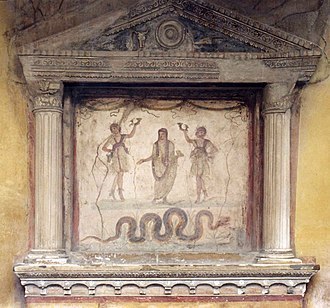
Finding where to settle:
The Balkan region has many names for place -bound spirits (stiia, stihio, stuha, stoikeion) which could be understand as forgotten dead, fiery snakes, or house spirits. In Russian and Ukrainian lore there is the domovoy (domovoyk, domovoi) a house spirit associated with ancestral spirits, and the house addar/snake who resides behind the stove and brings blessings. There's the Greek Lares, the UK's brownies, and the German kobolds and dracs. Throughout Europe people have been naming these land spirits as well as practices for dealing with them.
Lots of thought was put into finding places to build a home, consideration was especially given to the dead or spirits already occupying a space. Making sure not to build where the dead are laid, and sometimes asking guidance or permissions from ancestors. Ukrainian mountaineers taught this, as well as to never build houses at crossroads or places pathways crossed, or build atop the old ruins of a heating stove (as this means there is already a spirit occupying this place). There was also an avoidance of building on a plot of a land with lots of tree stumps, with a focus on if the stumps were red after being cut, suggesting they were bleeding.
Certain spaces remained untouched and left sacred to spirits. Certain groves, mountains, or rivers were set aside to the spirits of the gods of these places. Special groves where a tall oak grew, rivers where spirits are said to bathe, or caves in the sides of mountains where trolls or dwarves were said to live. These places remain unbuilt on for a while out of respect for the beings already occupying them. Priests moving through the area encountered forests so sacred in rural Lithuania that you could not enter or touch certain woods with iron (tools for cutting). If someone did the penalty was death. The fear of place spirits was very present.
Some good omens to build in the Baltic region are where you find black ant hills, where a cow has loved to lay, and where the future house-owner dreams of a domestic animal. A new moon was also a good omen for construction. Romans would often favor the side of roads for building homes, as money and people flowed through here. Places away from others such as the edged of fields were avoided due to being away from the hum of life. The Romans also avoided building at crossroads or over cemeteries.
A few ways were utilized to find a spot to build. Sometimes the materials used in the building were used to divine a location, such as the case with the church of Siuxt (Kirkland, Russia) where a rock placed to begin building rolled down a hill in the night, so they continued building where the stone landed. The stone had been placed close to another property, and it seems the spirit already residing there didn't want company. Other times an animal would be allowed to wander until exhaustion an a building was built there, or a log was tossed into a river and where it stopped they built. Sometimes the throwing of logs or floor boards into water from a prior home was done in honor of a pagan god, letting their new home be decided by the divine.
When spirits occupied a place:
Sometimes a place is already occupied by spirits, so people have devised ways of laying claim to these spaces. This has been done similarly to using a piece of wood of from an old home, except with a coffin in the case of Kveldulf heading to Iceland. He was dying and asked that his coffin be tossed into the sea to show his son where to build there home. This was a way for his spirit in death to claim and become and rooted ancestor there for his future descendants. Other times a large staff/stick is driven into the ground and the land is declared to be where a son will build their home.
Fire was also a common element for claiming land from spirits, as it's solar properties was believed to drive away chthonic land spirits. In folklore it turns dwavres to stone, and stopped elven islands from sinking underwater. Norwegian king Harald Fairhair helped codified rites called "eldvigning" or "consecrations by fire", but there is reason to believe it predates him. In one example a fire is kindled and spread from sunrise to sunset, and the land in which the individual encircles with fire becomes theirs. A flaming arrow was another option, being shot over the land that is being claimed.
Circumambulation was also a common tactic and oldest forms for laying claim to space. As the act of encircling something is both protective (creating a barrier) and a declaration of sacredness of what is being protected inside. This holiness could be due to the presence of a god, saint or holy relic, spirit or dead relative. Circumambulation was combined with the use of fire and bells to excise claimed land and remove any unwanted spirits. Moving in a circle making noise to tare down protections can also be seen in the bible's story of Joshua, where the Israelite move in a circle around Jericho to tare down it's walls. Similar methods were used by witches in North Berwick England where they walked counter clockwise around a church to unlock it's door and preform their devlish rites in a once holy place.
In Thailand we see similar elements emerge. When a house-builder wishes to build a home he will approach an expert who is an architect, builder, and ritual specialist who is usually a former monk. This expert will decided when to begin building on an auspicious day (between harvest and the next first ploughing). The ritual expert is also responsible preforming various exorcisms of the materials and land, as well as for taking into account the nagas (serpent spirits who reside underground) so the posts being put into the earth can be laid parallel to them prior. Gunpowder is burned and the poles are washed with water to frighten away evil spirits.
House spirits in these contexts were called "sao phaya" to refer to the spirit of a single household, and "cao thi" for the spirit of a small community or ancestral shrine. Other names such as "phi" (which to my understanding means "ghost") also appear.
Beginning construction:
Now that you've made claim to the place you want to build it's time to begin the work of construction. Which often takes consideration of the land spirits and giving scarifies to them so they won't stand in the way of construction. These rituals scarifies and acts being understood as a type of contract with the spirits occupying this place. Throughout history the types of scarifies have changed. Going from young humans, to goats, oxen, dogs, and roosters. These bodies being found below building or inside the walls of homes, churches, and monasteries. These animals eventually replacing humans. Interestingly, these same animals used as sacrifices were also the common forms utilized by these guardian land spirits. Snakes were common forms too, and were believed to be a good omen to find a snake living in the walls of your home. Ancestors were also used as masks by these beings, which relates back to the burying of people or our dead below the home.
Specific trees or stones were also used as the place of these sacrifices. Forming a compact with the surrounding spirits, who revive them in place of the spirits of home. Scarifies in these cases could take the form of leftover food or gruel. These stones and trees were to be left undisturbed, or ill fortunes could befall the family.
The Carpathians used to lay loaves of bread and salt under the four corners of their future homes, as this was supposed to bring wealth. Bread and salt being important parts of inviting a domovoyk into a new dwelling. Again a pact is presented to the spirit, food and substance in return for blessings.
Other rituals in Polissia involve the holding of a feast when the foundation of a building is laid. During this feast guests were expected to not step on the doorstep of the new home, as this was sacred place for the spirit who protects the house which had to brought over. Another held superposition was not to whistle during this period of construction, as this could scare off the spirits here.
Other foundational rites in the Balkans include giving an offering to the future spirit that will live here through the foundation stone when it's laid. If a sacrificial animal is used it becomes the form of the guarding spirit of this home. On occasion someone sick or near death was used for this purpose. In some cases a person's shadow was measured with cotton, and that length of cotton was included in the foundation or walls of the home as a sacrifice. Believing that the individual who's shadow was measured would die soon.
Once the foundation is laid and the posts are set the rest of the building is swiftly put up and filled. From this moment on families will work to keep their house spirits happy thorough the observance of taboos and rituals. To keep good fortune and life flowing into the home.
Summary:
-Land that is already occupied by a spirit is hard to build on.
-Certain omens can signify good land for building.
-When a spirit does occupy a space there are ways of laying claim. Such as through fire, circumambulation, or pacting with them.
-Sacrifice and death helps establish a connection with a place.
-Spirits of the dead and place emerge through characteristics of the house spirit
Sources:
Demons and Spirits of the Land, by Claude Lecouteux
The tradition of household spirits, by Claude Lecouteux
Pagans in the Early Modern Baltic, Edited and translated from Latin by Francis Young
Architectural and political space in Thailand, by Andrew Turton
Stoikheion, stuha, zduhac: Guarding spirits, weather magicians and talisman magic on the Balkans, by Eva Pocs
#witchcraft#occult#folk magic#spirit work#folk lore#house spirits#pagan#paganism#witchblr#trad craft#traditional withcraft#history#witch#ukraine#balkan#folk history#land spirits#familiars#familiar spirit#tradcraft#original content#ramblings of a madman#my stuff
37 notes
·
View notes
Text


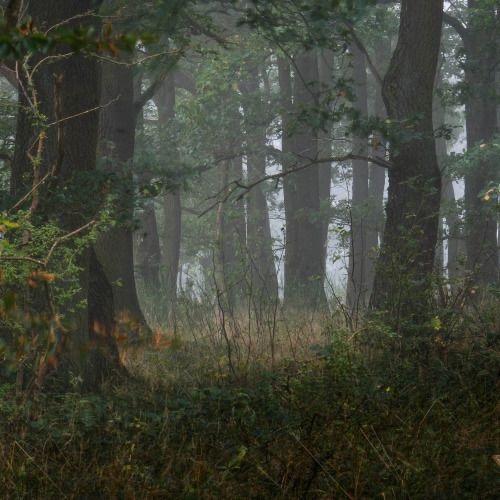
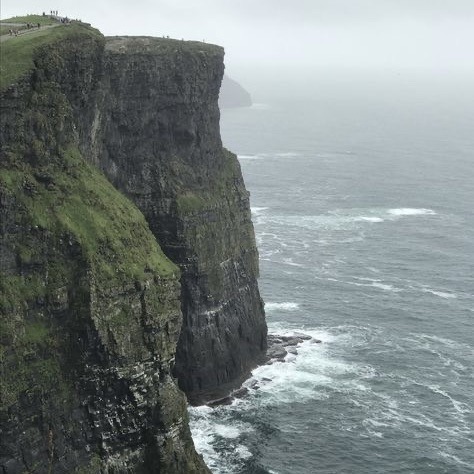

here is a little introduction to the original fantasy world i came up with for the eflorr trilogy.
series masterlist | pinterest board | playlist | masterlist

Welcome to the world of Tyhmalaa. Our stories take place on the continent of Aton where the two major kingdoms (Eflorr and Obelón) have had a feud spanning decades.
here is a little list of facts to give you a sense of what kind of realm this is:
currency: platinum, gold, silver and copper
monsters: yes
magic: no
calendar: the year is just divided by the four seasons (each with 90 days in them) with 7 days in a week (Moonsday, Tidesday, Windsday, Thundersday, Fogsday, Stormsday and Solarsday) and the year shift is on the longest night of the year on the 30th day of winter
year the first story begins: 856 PR (post-rimesunder, an ancient white dragon that once froze the entire continent of Efira for 2 centuries till he was slain)
climate: the weather in Aton goes through all four of the standard seasons (sping, summer, autumn and winter), though most of the stories take place on the northern side of the continent, so it is on the colder side.
religions: there are multiple gods people worship (some notable ones are: Apa – goddess of wilderness and the sea, Kotris – goddess of knowledge, Cicero – god of war and peace, Zondür – god of atonement and love, Sona – goddess of life and death)
kingdoms on the continent: Eflorr (capital: Borün) and Obelón (capital: Ingorn)

maps and doodles:
it took me around 30 hours of work to draw all of these, but it was super meditative.
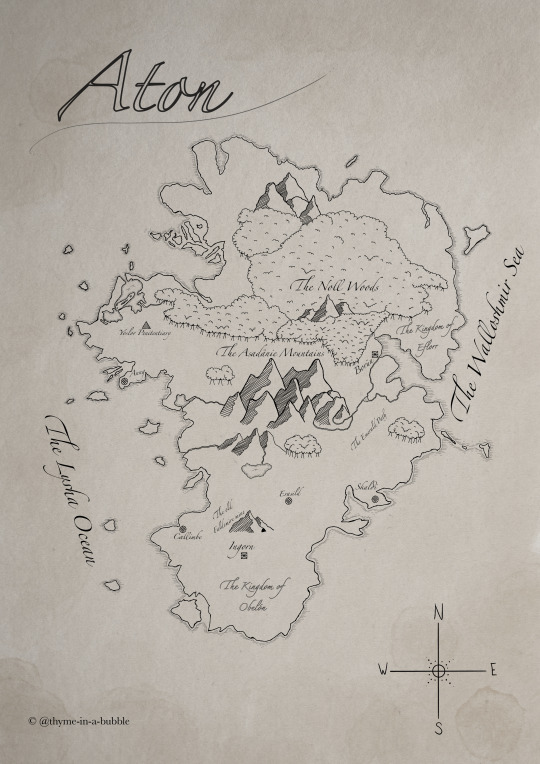
map of the continent of Aton.
⊠ squares = capitals
⊗ circles = smaller towns
△ triangles = speciality locations
the continent of Efira is located to the north east of Aton.


Fort Borün. The ivy-covered stone castle on the top of the cliff is home of the royal family of Eflorr.
Elm Square. The beating heart of Borün, it is not only a central meeting place for all, but also the district where the majority of the city's shops, taverns, etc are. The town square gets especially sparkly during the seasonal festivals with booths are stalls crowding the market.
Willow Grove Cemetery. As the name would suggest, a large weeping willow tree grounds this cemetery that it is built around. Although Eflorr as a whole commonly isn't very religious, this graveyard does house a few alters and shrines to various deities.
The Valerian Ward. You'll find all manner of schools, museums, as well as Borün's beautiful aquarium in this part of town.
The Port of Borün. The city's docks are always bustling with excitement and possibilities.
The Western Farms. Up on the hill that swiftly blossoms into The Noll Woods, are a plethora of rolling fields and cosy cottages.
The Beach. Down the little steps on the northern side of the docks is not the only way to access this cove. Though the steep path some way further north is no secret, not everyone is privileged to the knowledge that the castle's cellar opens up into a cave system that leads out onto the beach. Created as a safety measure and a last resort for the royals to escape, the tunnels most commonly got used by the young royals as a daring playground.
The Tulip Neighbourhood. The homes in this part of town have generous courtyards that bring the households together.
The Dandelion Quarter. Part residential, this neighbourhood also houses a grand park (The Riverview Public Park), where combat courses/training are held every weekend, as well as The Water Lily Orphanage.
The Snowdrop Sector. For those not inclined for the bustle of the city's centre but still want to live close enough to the action often settle down in a little cottage out in this district. Many also chose to retire out here, living out the rest of their days in a cabin by the sea.
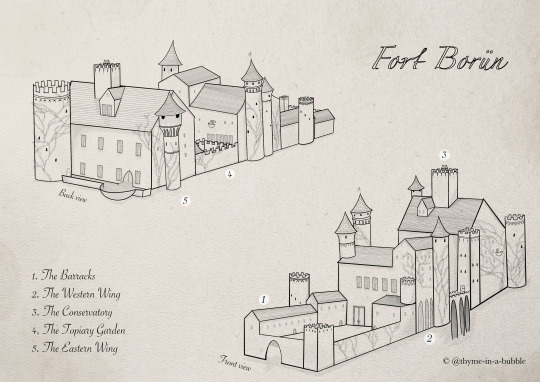
The Barracks. Through the main gate lies a grand courtyard to welcome you to the castle. The surrounding buildings are designated mainly for the wardens. There are living quarters for them, training areas, armoury, small stables that also house the royal horses, as well as the city's small garrison.
The Western Wing. In here lies many of the more public spaces: throne room, ballroom, banquet hall, servants quarters, the kitchen, war room, the meeting room that's utilised mostly for gatherings with the town council.
The Conservatory. This secluded greenhouse was built as a memorial to King Edward III. who apparently had quite the green thumb.
The Topiary Garden. A private courtyard separating the two main buildings is a serene space where one can come sit on a small bench and listen to the trickling water of the fountain in the centre.
The Eastern Wing. This part of the castle is home to the royal's private chambers as well as numerous other spaces such as the library.
The castle also has a basement that's not only utilised for storage (both of common items as well as the most precious that's kept safe in the grand vault) it also connects to a tunnel system that leads all the way out onto the beach.

© 2024 thyme-in-a-bubble
76 notes
·
View notes
Text

Summary:
Allan Waite, a strange student from Hogwarts, finds a group of poachers trying to break in a vault and save the rest of their company from certain death. Despite his better judgment, he decides to help.
Word Count For The Nerds: 5826 words Page Count For The Nerds: 13 Pages

The sun pounded down forcefully on the dirt and grass, which only doubled the bombardment on Allan’s skin, yet years of outdoor attention and activity had made him sturdier to the sun’s constant war, but years of hoarding clothes on his person had also kept all but his face pale. He was used to it, however, and pushed forward through the blur of heat of the ground, towards some unseen goal he wasn’t even entirely sure about himself.
Allan kept walking forward in the grassy hills that provided little cover, passing along a cliffside edge that threatened to toss him over with one step to the right. Down there, he could see a poacher camp, set right outside a cave. Cages were stacked in rows, and in one lay the key to the entrance of the cave, a large cube with a symbol on it. They seemingly had figured out it had to do with the cave in some way- or it wouldn’t have been so heavily protected. He could see the water from here- just a ways away, past the camp which was set on another cliff. Then again, this was the coast- you could see water nearly everywhere.
He clicked his tongue to himself, making his way to his current destination- a nearby cemetery that had long since been abandoned over the course of decades, turning and walking towards a bridge built across the river he had been following for the past day to find his way. The heels of his boots met stone, found grip, and held weight with each step forward. Thankfully the bridge was still sturdy, and he soaked in the view once more, glancing over the edge towards his right once again, watching the glittering water sparkle like a thousand gemstones in the setting sun, spreading the fire towards the beaches which served as the only divider between the two. A path slowly crept away from the sands, and up towards the bridge, dividing the cliff into two.
Everything is as it should be. He thought, satisfied with the rare quiet- too quiet, really, with a poacher camp nearby. Sure enough, his quiet was disturbed as he noticed a pair of legs sticking out from behind his view of the rocks. He moved just enough to see the full form and frowned when he recognized the mask on the face of the body.
A dead poacher? That seemed odd to him- poachers, as with any group, at least to some extent, defended each other. It was rare to see one alone- let alone dead. Creeping to the side a bit more to see past the rocks, he noticed what appeared to be another corpse- although it was hard to tell, since it was tucked closer to the cliff he had just walked away from, the shadows leaving it obscure to his vision. Curious, he deviated from his mission, and quickly jogged across the bridge, back the way he came.
He found a spot in the rocks where he could clearly see the bodies, and soon realized there was still more he had missed due to his position before. There were, in total, four poachers, two of which were dead, both laying in a similar fashion, near what looked like white symbols Allan could not quite make out, but which looked distinctly familiar. Another sat with his legs pulled up against his chest, tucked into the cliff in a way Allan could never have seen him from his position before even if he tried. He looked like he was weeping behind the mask, shivering and hugging himself, muttering half-incoherent thoughts and words.
The last poacher was groaning loudly in pain, bashing his shoulder into a metal gate tucked into the cliff, leading to a cave. He would walk a few paces back, run forward, and slam his whole body weight into the door, before doing it again after each inevitable failure.
Allan crouched down to watch them, curiosity eating at his heart the more he watched their clearly desperate efforts. They weren’t paying attention to their surroundings, clearly, since neither of them seemed to notice him.
“I can’t hear their screams anymore.” The poacher tucked against the cliff sniffled out, saying the first genuinely understandable thing yet. The other turned and looked at him, frowning and pausing his assault on the door, before letting out a loud, exhausted sigh and slamming his shoulder into the metal again, the bars cutting into his shirt and skin, bruising him badly enough he bled under the shirt, causing it to stick and itch. He paused again to move his shirt so that it no longer itched, and Allan bit the inside of his lip.
On one hand, poachers hunted and killed defenseless beasts. On the other, these poachers in particular were clearly desperate, and it looked like the rest of their party had been trapped in the cave. Although Allan didn’t want to help them, knowing how they had hurt others while working under Rookwood, he also felt terribly sorry for them- as they clearly were trying to rescue their team- assuming there was any team left to save.
Allan got up and climbed down the cliff, jumping down and catching himself, before hopping down again onto the dirt path with a soft thump. The frightened poacher squealed in terror when he saw him and jumped up, his wand immediately at the ready. This alerted his friend mid-slam, and he too twisted around to face him, hissing a threat.
“You! You’re that damned student! You have a lot of nerve showing your face around here.” He spat. Allan didn’t flinch, only shrugged and raised his hands in hopes to show he meant no harm.
“I’m not sure you’re in a position to say that, with what looks like a good chunk of your crew dead or missing in action.” Allan then nodded to the poacher who had yelped, and noticing how badly he was shaking, he gave a friendly smile. “Sorry for the scare.”
The poacher shivered and backed up against the wall, leaving his more sound comrade to step forward, unconvinced of Allan’s attempts at peace.
“What do you want, boy?” He growled through gritted teeth, which Allan could hear through his mask.
“I want to strike a deal. You want to go find your companions. I want to see what’s in that cave. I can unlock the door, and we can split the profits. I don’t want to fight you- put the wand away, please.” Allan explained slowly, emphasizing his words so it hopefully registered.
The poachers glanced at each other, seemingly worried for another potential bloodbath. Eventually, the both yielded, and slowly put their wands away, still studying Allan’s every move warily. Allan smiled and lowered his hands, creeping forward and fixing his gloves. He took a cocky bow, trusting them to not attack him for the few seconds he wasn’t looking at them, and he raised an eyebrow.
“Thank you kindly. I think we should get acquainted. Allan. Allan Waite. You two?” Allan raised his arms to gesture to the poachers. The terrified one shivered and remained silent, still not trusting him enough to speak. The other, however, shifted awkwardly from one foot to another, and huffed in irritation, clearly not thrilled at being on friendly terms with their number one enemy. Still, he adjusted his shoulder blades and stood up straight.
“Vincent, if you must know.” He declared proudly, “You’re not going to attack us, then?”
“Don’t be silly. You’re helpless. I have class. I want to help you.” Allan shook his head, putting his hands in his coat pockets and blowing a lock of magenta hair out of his eyes. Vincent snorted, and although Allan couldn’t tell, he could have sworn the poacher rolled his eyes.
“Well I’m so very glad that we’re so helpless that the great Purger of Dark Wizards feels bad for us.” Vincent crossed his arms, the defensive gesture signaling to Allan that he did not trust him, and rightfully so, in Allan’s eyes. The other poacher sunk back into his crying position and began to sob. Both Allan and Vincent turned towards him and Allan frowned, furrowing his brows in genuine sympathy. He took his wand out of its sheath and slowly walked over to the gate, Vincent watching him the entire way, wary of his every move.
“What are you doing?!” He hissed the second he saw the wand, just a little bit of fear creeping up into his voice. Allan chuckled at his reaction.
“Unlocking the door, you fool. Do you want to find your friends or not?” Allan replied, snapping in a way that left little room for argument as he cast Alohomora on the lock. He walked right by a gawking Vincent, who huffed and adjusted his cat skull mask as the door swung open with an agonizingly slow creak. Allan turned to look back at the frightened poacher and smiled.
“Stay out here and guard the entrance. If anyone but us comes up, close the door immediately.” Allan ordered. The man nodded, still visibly shivering like he was experiencing his own personal earthquake. Satisfied with the nod for an answer, Allan turned to look down into the dark pit of a hallway, lit only by a few stray torches. Vincent leaned in a little next to him, looking between Allan and the hallway.
“…It’s open.” He said after a moment, urging Allan to move already. Allan gawked himself, and rolled his eyes.
“Well- Yes I KNOW that thank you.” He started walking forward and into the stone halls. It was clearly man made- more likely one of the many treasure vaults like around the Highlands. Still, he crept down onto the rubble, quietly trying to avoid making any noise by avoiding the pebbles- An effort immediately foiled by Vincent who tripped on a stone slab, a loud Clunk ringing through the hallway. Allan winced and froze. He didn’t want to disturb whatever lay in here- lest it decided to disturb them. He looked back at Vincent with a scowl, who gave a tiny, albeit forced, smile.
“Any idea what happened here?” Allan whispered. Vincent shook his head.
“The gate locked behind them- all we heard were the shouts of a scuffle.” Vincent shifted away from the slab, careful not to touch anything else. Allan turned back around to keep moving.
“What happened to the men outside then?” Allan hissed quietly as he put his hand on the wall, feeling its rough texture. A nearby torch, sensing movement, lit itself. Allan squinted as his eyes adjusted to the sudden light. He was surprised any torches down here still worked- although he supposed it could be magic.
“Inferi out front. Lot of ‘em. Stupidly strong for a shambling mass of bones.” Vincent replied. Allan raised an eyebrow, surprised.
“…Inferi. Inferi took out three poachers? And then what? Left?” Allan replied, clearly dumbfounded by how three fully grown adults couldn’t just Confringo a bunch of Inferi. It seemed to be a poacher’s favorite spell. Vincent shrugged.
“I don’t know… They were stronger. Something was wrong. They were like- stone statues- and if you managed to get a crack open- they glowed red.”
Allan frowned at Vincent’s description. It sounded oddly similar to a particular pyramid-shaped object he knew of. Stone that glows red. Hm.
“Any chance they attacked at night and crumbled to ash once the sun rose…?” Allan offered, throwing it out there that he might know what those things were. Or are- if there were any more.
Vincent stopped and gawked at Allan, who continued forward. He scrunched his eyebrows and blinked, putting one hand against a stone wall as if in thought.
“How- how do you know that?” He wondered aloud, Allan just shrugged and gestured for Vincent to come along. It would be too much a hassle to explain. To a poacher no less. He didn’t exactly “help” poachers and Ashwinders often. This one just got lucky that he was curious.
The hallway opened, each wall suddenly swallowed by a larger, darker room. Allan had to blink a couple of times for his eyes to adjust- which was promptly ruined by Vincent casting Lumos. Allan sighed as he was blinded and he reached over to his left and to bat at Vincent’s wand. Allan’s hand stopped short however as the rough shapes he had started to see in the dark suddenly became clear, and he could see the limp, lifeless forms of several poachers, strewn across the floor like ragdolls with broken or even crushed limbs. He cringed enough his left arm returned to his side. He doubted any of them had very painless deaths.
That would explain the screaming dying out… He frowned. At LEAST the Killing Curse is painless. Whatever was in here certainly didn’t give any of them that mercy. Allan felt a little drool well up in his mouth and his hand almost instinctively inch closer to his wand. The pain they must have gone through…
Allan slammed his right hand into his coat pocket and looked at Vincent who was staring in horror, even under the mask the wide eyes were visible, glittering from the light of his wand. Allan reached out again, but hesitated and sighed.
“I’m sorry.” Was all he managed to squeak out. He was one to talk, so he knew better to say more when he had a nasty reputation for taking out poachers in the Forest. Vincent nodded and approached one of the bodies, leaning down a bit to look at it and instantly recoiling at the smell of blood.
“…It’s like. It’s like the corpse of a bird that got under a carriage’s wheel.” He concluded. But human. Allan didn’t need Vincent to say it to know what he meant.
Allan wandered into the room as well, looking at the roots coming out of the ground from trees that must be above them. He squatted down to inspect them. The soil was soft and crumbled easily to the touch. It was fresh.
“Vincent. Stay away from the dirt. And the roots.” Allan ordered with an air of urgency. Vincent seemed to clock it was important and frowned, looking over.
“Why?” An understandable query.
“I dunno. Hunch.” Allan frowned, standing up and looking around. “I just don’t like it.”
Vincent raised a suspicious eyebrow, the mask shifting up slightly on his face, conveying to Allan his doubt. Then again, Allan didn’t need to see his face to know he probably didn’t trust him.
“…Right.” Vincent turned to move further into the room, spotting a wall to the left with loose looking bricks. Vincent wandered over, intrigued. As he did, the bricks, enchanted as they were, shot themselves back and reformed the wall, opening into a new, smaller room. Vincent jumped and scurried back in shock, unintentionally landing his heel in the crook between the floor and the root of a plant, his own momentum forcing him backward, and he fell to the ground, snapping the root with a loud “Ack!”.
Allan immediately turned around, worried as to the condition of his companion, but failed to warn the man, as a skinny, stone hand shot out of the loose dirt and grabbed his arm with painful force. Vincent, with his arm now pulled against the ground, gasped and tried to pull away to no avail.
Allan took a step forward to help Vincent, paused as he listened to the groans of other undead assailants as they pulled their bodies out of the ground. A quick glance around confirmed the worst of his fears, as at least four other ”inferi” surrounded them from all around the room. Allan realized quickly he had little time before they overwhelmed him, and he rushed over to Vincent.
Vincent gasped at the stone arm, which now slowly revealed a whole head and body. Vincent could see the “skin” of the creature wasn’t skin- but some sort of stone cracked and groaned with every swift movement. It seemed impossible to break from. It didn’t help that Allan himself looked panicked- although Vincent gathered that made sense. He was just a kid. Even if he seemed to know what was going on- he was still JUST a kid.
“Lumos!” Allan shouted, his wand giving light. He shoved it in the inferi’s face, which seemed to make it back away with a screech of agony. Vincent broke his hand away and scrambled up. The creature was completely still now that it was in the light- like some sort of… Undead statue? Now was not the time for questions.
“That’s what was outside! Merlin’s bloody cock-“ Vincent gasped as he scrambled away, taking the hint to grab his own wand and cast Lumos.
“Language.” Allan grumbled in Vincent’s vague direction, and turned around, waving the light in the direction of the other “inferi”. His aggressive motion made them swerve away the second the light moved away from them, but his wand gave a strained flicker. It was like they themselves were soaking up the light, and perhaps the very magic of his wand.
“Alright, wiseass. How do we kill ‘em? Fire?” Vincent hissed back, waving his wand in the direction “Inferi” that had attacked him moments earlier.
“They’re stone. You can’t kill stone- let alone what’s already dead.” Allan frowned and looked back into the hallway, where the torch was still flickering with fire. He glanced at his wand, which was starting to flicker more as its unnatural light was drained- presumably by the creatures. With every spare second the light was out, they crept closer to Allan.
He shoved his wand in his pocket and grabbed the stone arm of one of the monsters, vaulting himself over it to get out in front of them. Vincent let out a shocked gasp as Allan sprinted to the fire, only to be grabbed a moment too soon by the coat, Allan turned around and sucked in his breath. The whole room looked like a void- with the exception of Vincent’s wand. A single arm attached to a stone body reached out, gripping onto Allan’s coat.
Allan looked at Vincent, whose wand flickered slightly, causing the poacher to smack his hand in confusion. With little more consideration, Allan ripped his coat out of the grip of his assailant. He turned around with a frustrated hiss.
“Confringo!” A sizzling, swirling giant spark of fire leapt from his wand, hitting the “inferi” that had attacked him in the face. It froze, like stone, staring at him with what was left of cold, broken eyes. He didn’t have a second to think as the flame died out, and his wand sparked, indicating to him that he wasn’t getting anything out of it with these creatures around. Vincent frowned as his own wand flickered.
“Alright, smartshoes. What now? I can see those gears turning.”
Allan stared at Vincent for a moment before something clicked, and rammed himself into the nearest “Inferi” and knocked it over. Vincent gawked.
“Are you INSANE? Do you have a DEATH WISH?” He hissed through his teeth as Allan sprinted out of the room back into the hallway.
“Shut it, Dad.” He grumbled sarcastically as he grabbed the torch from the wall. Vincent gasped and sprinted forward, his wand going out in the same breath. Instantly, “Inferi” were on top of him with the speed of a bullet, yanking him back away from the hallway. He shouted out as he was pulled to the floor like he was nothing more than a ragdoll.
Allan stopped on his tracks as he watched Vincent get pulled into the darkness of the room. He bit his tongue to keep himself from uttering several unholy words.
He shoved the torch in the face of the first “Inferi” he could see in the dark, which let out a horrible screech of pain, as its stone skin cracked and shattered as easily as sugar glass. With one last effort, in spite of its pain, it reached its crumbling hand out and tugged on Allan’s coat, before falling to the ground in a million pieces. Allan fixed his coat and walked into the room, filling it with the natural light of the fire.
A loud roar of howls of pain pierced Allan’s ears like a spear. Each creature still as stone, but yet crumbled to the ground in an uproar of sheer agony, reaching up as they did. Vincent gawked as the magic of his wand returned to him, the light emitting from its point, and he looked at Allan in understandable confusion and relief.
“…What…?” He gasped.
“Natural light. Lethal to them.” Allan explained carefully, “That was the difference. They’re afraid of light. Fire is natural light. Unnatural things are afraid of nature because it always wins. Like… vines overtaking a brick wall.”
Vincent raised an eyebrow. He looked the kid up and down a bit, confused by how this teenager made such a conclusion like it was the most obvious thing in the world.
“But- the torch was enchanted. It came on on its own.”
Allan shook his head and started walking forward, looking around the room with the flame and wandering over to the wall that had moved just before the attack. “The stick would have been enchanted to LIGHT itself. The fire wouldn’t have been.”
He turned to look at Vincent, checking to see if he was following mentally.
“Those things… They aren’t Inferi. They’re… like… Husks. Inferi have a little intelligence enough to talk and move. Those things? No. They just attack anything alive that comes near, like a golem.” Vincent said in a half panicked daze as he scrambled to his feet, dusting off the shards of stone. He felt vomit rise up in his throat when he realized that “stone” was now millions of pieces of dead bodies.
Allan laughed, and shook his head. “Oh no no no. They’re intelligent all right. Did you think it’s a spell that they only moved in the dark? No no, it’s a HUNTING tactic.” Allan smirked to himself as Vincent looked at him with horror.
“You mean… Those things… Could have… moved at any moment?” Vincent looked at the dust and shards on the ground and backed up slightly, immediately stumbling over a dead comrade, now coated in dust. He cursed loudly and looked at Allan with a new fire in his eyes, suddenly raising his wand in the boy’s face.
“Who ARE you?!” Vincent hissed angrily, as if all this was Allan’s fault.
Allan narrowed his eyes and frowned, tilting his head.
“Allan Waite. Feel free to tell your superiors that I saved your life. See how happy they’ll be then.” Allan walked towards the center of the room with a coy smirk.
“We had a deal.” Allan tutted as he walked. Vincent’s hand quivered as he held up the wand, realizing that Allan was entirely unafraid- perhaps amused- about his threats. He pressed his lips together and put his wand in his pocket.
“You’re a strange kid.” He decided aloud, causing Allan to snicker profusely. Allan wandered over to where Vincent first fell.
“You’re clumsy.” He pointed out. Vincent frowned as Allan pointed out the very obvious fact. Allan moved silent as the dead of night, so of course Vincent was clumsy by his standards.
“…Hm.” Vincent shook his head, not gracing the kid with an answer. He walked over, following Allan as he started to walk closer, the bricks moving and shifting, revealing a small closet-sized room, as dilapidated as the rest of the place. Inside was a small chest, about as big as a large suitcase. Allan narrowed his eyes and looked back at Vincent, putting a foot on the top of the chest before smirking.
“THIS is what you fell over?” Allan chuckled. Vincent rolled his eyes at Allan’s mockery. Allan shook his head and took his foot off the chest, squatting down on the floor, and started opening it. Vincent grabbed Allan and pulled him away from it, the lid snapping shut with a loud clank.
“What if it’s booby-trapped?” Vincent hissed. Allan rolled his eyes and brushed off his shoulders.
“Oh please. I doubt anyone who built this expected ANYONE to get past those creepy crawlies. Most don’t even know reinforced Inferi exist, let ALONE how to stop them.” Allan leaned down and lifted the chest lid anyway, causing Vincent to step back as if something would jump out.
Allan snickered as Vincent reacted, and looked down to spy their fortune. Inside was nothing but a light purple scarf, eaten partially by moths and maggots. Allan scrunched up his nose, picking up the scarf and holding it away from him like it was diseased. “...Well. This will give you lice and other pests for sure…” He said, Vincent, replying with a face similar to Allan’s own.
“...Lovely. All this, for virtually nothing. For Merlin’s sake, we can’t even split it!” Vincent huffed, before being met with the scarf being tossed at his chest. Instinctually, he reached up to catch it, immediately fumbling and nearly dropping it. “Nah. You can keep it. I’ve seen what I wanted to see. At least you’ll have something to show for your efforts.” Allan shrugged and turned to walk back into the room and from there the hallway. Vincent turned the cloth over in his hands and huffed before it registered that Allan was walking away and he whipped around to follow him, scampering behind as they crawled back into the light. “Now hold on just a minute! What am I going to tell my superiors? What am I gonna tell others?” Vincent declared worriedly as he scrambled back to Allan’s side. Allan just shrugged and tilted his head.
“What do you WANT to say?” Allan countered, turning around and raising his eyebrows curiously. There was, as there had always been, a glitter- or perhaps a shine, in his eyes that hadn’t been there before.
Vincent sighed and leaned back against a nearby wall. He took a moment to stare at the overgrown ceiling, before frowning and looking over at Allan.
“We should get out of this place.” He observed, not wanting to get attacked by more stone monstrosities. Allan chuckled and nodded, clapping Vincent on the shoulder as he walked by.
“Fair enough.” Allan walked down the thin hall and put the torch back on its mount, waving Vincent over. Vincent didn’t hesitate to scurry out of the dark towards Allan, clambering through the loose rubble on the ground to get away from the pit of darkness. Once they got to the gate, Vincent shoved past Allan to scramble out, running over to his partner.
Allan frowned, looking at the partner at hand, who had sat with his legs pulled against his chest against the same cliff face the vault had been carved into. He walked over and dug through his coat pockets, which were endless by design, to pull out a worn glass bottle that had a piece of cork shoved in the top to keep the precious liquid in. He held it out to the poacher gingerly.
“Hey. Drink this. No one thinks straight when dehydrated.” Allan furrowed his brows and pressed his lips together. Despite the terrified man being his enemy, he still felt… Well. Pity. They were only following orders after all, that didn’t make them the villains, just the tools.
The frightened man snatched up the bottle, practically drinking the whole thing in one shot, before coughing.
“Water.” He observed roughly. Vincent seemed to raise an eyebrow at this, frowning.
“Are you…” Vincent trailed off a bit, thinking before speaking. “Are you alright?” Vincent glanced at Allan for a moment, while the poacher nodded slightly, coughing again. Allan stood up, so Vincent followed. He looked at the curled up comrade with clear worry, before opening his mouth to speak to Allan, only to be cut off.
“Get that man a good meal and some safety. No one comes out the survivor of a slaughter, a survivor of mind. Not completely. Give him some time, and some compassion. You both just watched your whole team die in front of you.” Allan gestured to the man and then Vincent, giving a soft, kind smile.
“That goes for you too.” Vincent gawked at Allan’s words and then back, before taking off his mask for air, sighing like a seal coming up for air.
“I’ll take him back. To camp, I mean. Make sure he’s treated right. I’ll have a report to get to.” Vincent gritted his teeth. The last thing he wanted to do was face his section’s leader. Allan clicked his tongue idly.
“Best get to it then, bud.” Allan did a sort of childish half salute and turned to walk away, but Vincent grabbed him by the shoulder with a calloused hand. Allan flinched from the grip.
“What about you? Where will you go?” Vincent bit the inside of his lip, pausing for his own thoughts again, as seemed to be a habit of his, before frowning.
“Do you have… Anywhere to go?” Vincent finished, as if a creeping hunch had told him. Allan frowned. Maybe his demeanor had given it away. Allan had to pause and think for himself, unsure if he should give a poacher his location.
“I go wherever the birds go.” Allan decided finally, pulling out of the grip of the older man. The look on Vincent’s face gave away that his answer was unsatisfactory for the poacher, but he wisely kept his mouth shut and turned back to his partner, helping him up. Vincent shot Allan one last look of concern, before wandering up the hill between the nearby cliffs.
Allan watched them go with interest, letting them leave his sight before turning away himself. Vincent helped hold up his comrade the entire way up, knowing that he wasn’t in the right state of mind to lead himself back in one piece.

Vincent practically had to pull the other man uphill by his shoulders, slowly making their way to their camp of origin to rest. By now, the sun was dipping below the horizon and it would be dusk by the time they would even see the lights. Vincent sighed gratefully when the orange stars popped out over the ground to greet them. Then, he noticed a silhouette he recognized, a woman in a coat and a tophat and let out a groan while he was still out of earshot.
When the two men got close enough to see her better, he recognized the red hue of the coat and hat, as if they matched the fiery red of her constant anger. He tried to smile, but he was pretty sure his distaste snuck its way through his muscles to give his true thoughts away.
“Evening, Alicia.” He brought them both up to her and she scowled.
“Where’s the rest of your men?” She flatly replied, not even bothering to ask what happened to his companion.
“They're dead. Inferi caught us off guard.” Alicia looked like she was going to lay into him so he quickly cut her off.
“With all due respect, this man needs medical attention, stat.” Vincent gestured to the man beside him who seemed to choke on air and cough. Alicia raised an eyebrow and frowned, as she seemed to do constantly, and nodded, she turned to walk towards the fire to address a woman eating there.
“Get Marco. We have a man down.” Alicia said with just enough priority to get the poacher to drop her food and scramble up, rushing off into a tent, only to come back with another man only a few minutes later to take the weight off Vincent’s shoulder.
He watched them all go, and rolled his shoulder where the other poacher had been holding onto him. He felt a pop and he grumbled in displeasure. Alicia seemed to glare at him at the mere sound, like a hawk on its prey, and he forced a smile, although still a little sore.
“Report.” She roughly growled, her eyes burning through him for answers. Vincent sighed.
“What do you want me to say? We were ambushed by some sort of magically reinforced Inferi. Everyone but me and him perished. All we found in that damn vault was a moth eaten scarf.” Vincent signed and held up the scarf, pulling it out of his pants pocket and sighing
Alicia frowned and narrowed her eyes, as if she didn’t believe him. She probably didn’t, and Vincent knew that.
“And how did you two escape unscathed?”
Vincent frowned and looked away from her prying eyes, glancing down the hill. He relaxed his shoulders as he basked in the view of the moonlite grass, swaying in the breeze like soft water. He saw something move and squinted, focusing his gaze under a tree where a nearly imperceptible shadow stood, so still it took him a second to register it was a person watching them from afar.
Allan. It had to be. He had to have followed them. But how? Vincent was trained to notice when people were following him, and the only things he had noticed on their journey was the spiders and occasional mongrel or wolf. He turned and looked back at Alicia, who he guessed hadn’t noticed him yet and smiled.
“I’m sorry ma’am. But that really is all there is to the story. We were defeated by mere Inferi, ma’am.” Vincent smiled under his mask as Alicia raised an eyebrow and frowned at him. After a moment she rubbed the bridge of her nose, annoyed.
“Your team must have had the brains of mooncalves, then.” She huffed and turned away, “Go sleep. We’re moving out for the forest at dawn.”
Vincent smirked and turned to look at the silhouette in the distance once more, who seemed to be creeping away from the scene, only stopping when seeing he was being directly looked at.
Vincent reached up and took off his mask, letting it hang by the strap in his hand as he pulled off the cloth over his head for air, revealing his unruly ash hair and eyes, matched by the light wrinkles of a man seen by time but not yet weakened by its flow. He gave the boy a light salute, too tired to give it proper form, keeping it for only for a moment.
He wasn’t sure how to thank him, but he’d seen people scarred by war before, and he trusted his gut. He would see this stranger again, somewhere, sometime. He knew it.
The shadow paused for a moment, before running away into the shadows, back in whatever path he had been on before the two met. Vincent watched for a moment, before, satisfied with his observations, turned towards his camp for some well deserved sleep.

END OF EXPEDITION 01
#hogwarts legacy#hogwarts legacy mc#allan waite#the mcverse#the expeditions#(Author’s notes: IM SO SORRY I TOOK SO LONG TO DO THIS. I HOPE TO MAKE THIS A SERIES OF ONESHOTS- BUT BECAUSE OF THE SHEER LENGTH OF EACH#ONE AND HOW STRESSFUL MY CLASSES ARE THIS TOOK SOOOO LONG#I promise now that Expedition 01 is out I’m actually going to try to catch up on stuff Ive been missing like art trades and stuff I’m just#SO BUSY 😭 be really patient with me I promise I didnt forget anyones requests Im just B U S Y#Anyway I hope you enjoy and dont mind waiting a few decades for the next one to come out ROFL. I’ll try my best to be consistent but no pro#🤣 sorry)
16 notes
·
View notes
Text

this was an experiment i wrote a bunch of random names and made a semi abstract map and then wrote lore of the places, not all there but might reblog or edit post with more later if you want to hear about one specifically let me know descriptions follow
The Vermin Wood is a place of towering snags, riddled with holes, carved with their own esoteric tongues, the the ground moldering with the burrows of insects, centuries ago a king had promised his people 100 years of prosperity, he kept his promise, so did the rot and it was patient The Incarnadine Vault A scholar became obsessed with hidden knowledge, but he feared something watching him, and so he had a vault made to protect himself, his research, and wealth, painted to hide him from the yellow watching eyes, the poison paint was his end, the pigment in its heart is rotting to yellow
the Scintillating Barrows are tombs filled with mirrors and crystal and once a year the sun hits them just right to make them all glow brightly, it is said that if you visit on that day you can see the spirits of the dead walk again ethereal
The Grave of the Flutists is a cemetery looking burial ground that actually has hidden winding catacombs beneath, the gravesite of a group of flute playing monks, even in death they have flutes pressed against their lips, no mater where you are in the tunnels you will always hear a faint playing, either from a high above shelf or within the heavy earth
The Isle of the Beast Cult is controlled by the eponymous cult they worship an ancient cave beast that lived among people there once they wear fabric cloaks resembling the fur of a beast complete with ears and tail and spots, they have their own breed of holy magic derived from their god
Village of Arsenikessers is a mining village built into mountains of toxic rock no outsider would dare touch, the miners are known for their strange vitality and slightly off appearances, but otherwise friendly nature, their minerals are known for their purity the land over
The Resounding Depths an outcropping permeated by deep bore holes, what created them is a mystery, ancient alchemist mining for materials?, or possibly legendary serpents of old? The only hint of their natures is a faint song half between natural and musical, as a crickets shrill cry from under creaking ice, a faint instrument droning. apothecaries come from far to lower jars and vials to the depths, and collect the fluid that distills therein. It imparts a soporific effect, and stranger still the memory of the song. The God Rot Field is a place where long ago a great hero learned gods could be wounded, even killed. Though they never truly stop existing at least not for an incredibly long time. Mold silver-gold spills out from the scraps of torn flesh and effluvia endlessly rotting and growing all the same. Occult tokens and wards have since halted the progress but not before it claimed a large swathe of land. The Silvering Fen was once the home of a powerful witch, upon death at the hands of a cruel hero, they cursed their lands: a denaturing and thinning of the world, a paleness. And every plant and animal therein would be shining a fickle silver, one that stained that hero as he left, leaving footsteps of blossoming silver leaf. When he arrived home, he was faint and weak, his shock of hair now silvered, and so none believed who he was. At the center still stand the shining ruins of a once great tower, some say there is still a relic of power there. Pool of the Legless Ones An old temple lays rotting, the entrance to an ancient flooded cavern, the water squirms and boils faintly with long slimy things said to be the precursors of all the beasts and all of man. It is said they will share their wisdom if provided with an icon of your devotion. Home of The Tallow Thief An unassuming shack stands perched on a crooked hill, home to the tallow thief, who once stole from the new gods themselves, now an aging mentor to those who move too quietly. His nickname came from his last heist, a cask of heavenly wax, boiled from the flesh of an old god, the very kind that forms the candles that light the halls of the heavens. The Caliginous Divide A great crevasse in which swirling dark mists rush forth blinding all but the most devout. an ancient bridge of peerless construction spans the length, part of a relic of a forgotten pilgrimage. Traders or other travelers have been exploring the route for centuries, they have found ways to honor to forgotten beings that allow them to pass without too much difficulty. The Point of Exaltation Rocky badlands of unparalleled splendor crowned by a grand mount. The winding pilgrims path climbs among the stones up to the peak. Against the view of the vantage, kneels a small stone figure, arms outstretched towards the sky as if receiving water. The figure is headless, though a heavy green star rests on its shoulders during the solstice. The Hungering Copse In the ages before the regal gods people were drawn to the hollow in the world at the center of the copse. They made yearly pilgrimages as birds should do, offering their company to the twisting trees. However, eventually their faiths found new paths and eventually they ventured into the forest less and less. Now any poor soul who wanders inside the shaded boughs becomes lost in faerie reverie, until they become thin and faint.
The Narrow Dens long ago beasts gathered in the shaded valleys, but as soon as the first god of dawn shined, the creatures were forced to refuge in the crags. They slid so kindly through the crevices, and overtime became accustomed to the tight spaces. One such beast, the thin wolves are recognized by their eerily long legs. Ages ago, a lone hermit frequented the area, he learned to get them to favor him, so that he may walk in peace and without fear in his heart. The tranquility found him completing his great work, and after he died and was recognized as a prophet, the thin wolves always accompanied him in carvings.
The Crawling Bog An uninhabited bog, soft wet mossy earth, gives way to shaded groves, all held aloft the eye of an old god of fervor, ever staring at the sky. The perimeter is marked with numerous stone and wooden arches worn. and through compulsion of tradition, a funeral procession must pass consecrating the ground around it. They drive a great charnel-hearse, and carry bushels of bronze blades or other items, which at intervals, are plunged into the earth with fastidious devotion. Some brave members seek to retrieve them after centuries, blessed by the gods emanations, that verdigris of unearthly temperance.
21 notes
·
View notes
Text

People keep coming to the cemetery and throwing flowers at Alexey Navalny’s grave for the third day in a row. The grave is no longer visible due to the amount of flowers. :: [Novaya Gazeta Europe]
Thousands of people came to the Borisov cemetery to honor the memory of Alexei Navalny. On the grave of the politician there is a mountain of flowers in human height.
By the evening of March 3, so many flowers were brought to the grave of Alexei Navalny at the Borisov cemetery in Moscow that they completely covered the wooden cross installed at the burial site (its height is usually about 1.7 meters). People carried flowers to Navalny's grave all day. The queue stretched for several hundred meters, although the cemetery guards demanded that those who came to the politician's grave spend only as much time as necessary to lay flowers. At 17:00 Moscow time, the entrance to the cemetery was closed, but not everyone who came to honor the memory of Navalny dispersed, according to Dozhd, dozens of people remained at the entrance, demanding to be let inside, chanting "Navalny" and throwing flowers over the fence.
* * * *
When Great Trees Fall Maya Angelou
When great trees fall, rocks on distant hills shudder, lions hunker down in tall grasses, and even elephants lumber after safety.
When great trees fall in forests, small things recoil into silence, their senses eroded beyond fear.
When great souls die, the air around us becomes light, rare, sterile. We breathe, briefly. Our eyes, briefly, see with a hurtful clarity. Our memory, suddenly sharpened, examines, gnaws on kind words unsaid, promised walks never taken.
Great souls die and our reality, bound to them, takes leave of us. Our souls, dependent upon their nurture, now shrink, wizened. Our minds, formed and informed by their radiance, fall away. We are not so much maddened as reduced to the unutterable ignorance of dark, cold caves.
And when great souls die, after a period peace blooms, slowly and always irregularly. Spaces fill with a kind of soothing electric vibration. Our senses, restored, never to be the same, whisper to us. They existed. They existed. We can be. Be and be better. For they existed.
[via "Alive On All Channels"]
28 notes
·
View notes
Note
Silly Game Time: Have you ever seen or heard a ghost (or what some might've considered to be a ghost)? If so, when and where?
Nope! I am protected by the plot armor of not believing in them and also refusing to go into places they might be. I mean except the house I lived in in high school, where people died and where they held funerals (one of which was so well-attended that the floor nearly caved in and the sons had to go cut trees as emergency supports for the cellar, which were still visible).
And the fact I love cemeteries because they're great places to go for walks. They're so quiet and well-maintained and decently level! Ghosts would really put a damper on all that.
But mystery house on a creepy hill during a lightning storm? Nuh uh.
2 notes
·
View notes
Text
Ohio/Kentucky Road Trip Photo Dump
At Corky’s in Memphis, TN. Never been before, but I sure do want to go back. This is a pictorial overflow from the weekly Substack newsletter. There’s a size limit on those things, so I am putting the rest of the pictures (with clever commentary) right here for those of you who enjoy such things to enjoy. So, you know, enjoy. The tomb of Muhammed Ali, at Cave Hill Cemetery. I’m not a big…
#family vacation#Kentucky Bourbon#Kentucky tourism#New Years Eve#Ohio tourism#President Harding#President McKinley#road trip#tourism#travel#vacation
2 notes
·
View notes
Text
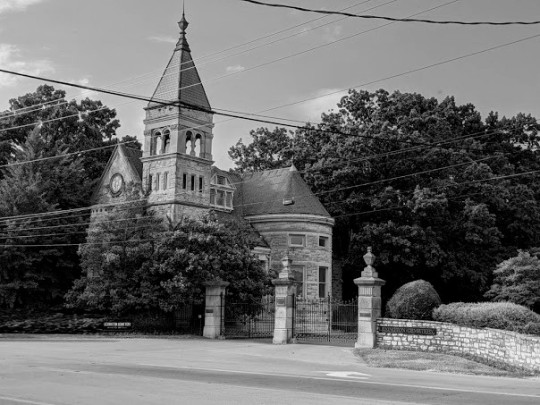
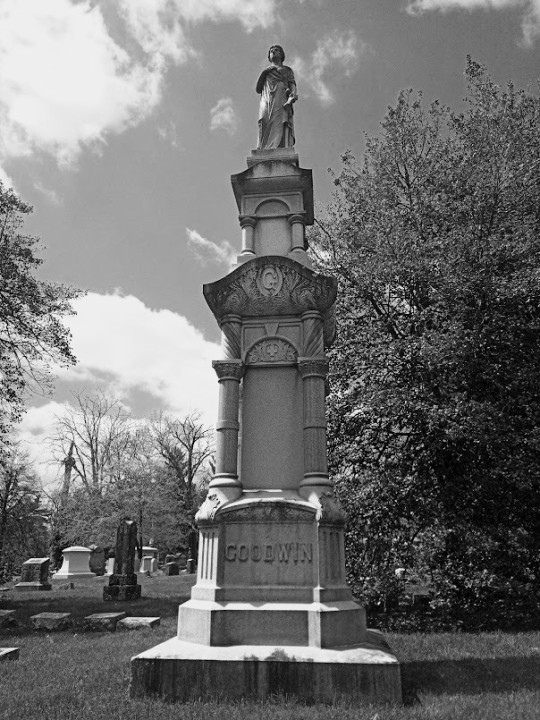
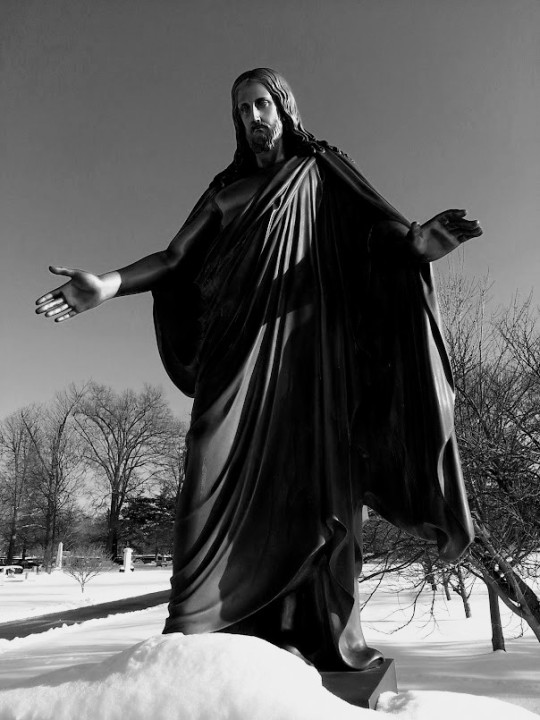

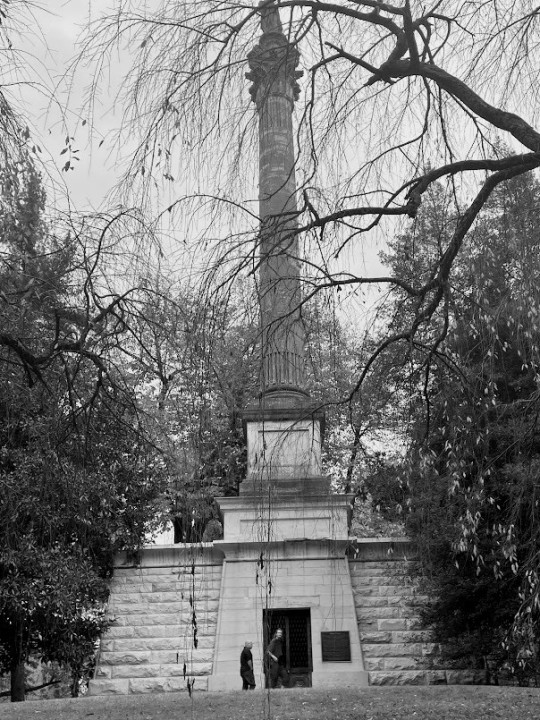
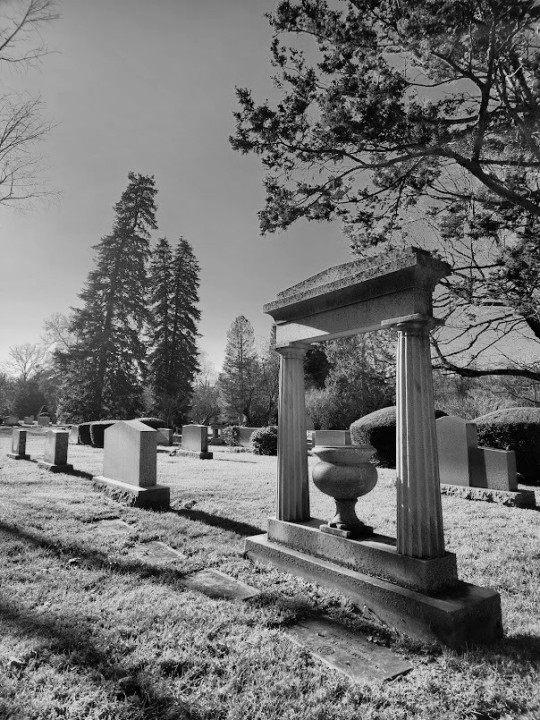

1 note
·
View note
Text
I was taking pictures in Cave Hill Cemetery this morning (because, of course, I was), and this came up in my mix.
2 notes
·
View notes
Text

This month I read “Lincoln in the Bardo” by George Saunders. Historical Fiction/Magical Realism. Published in 2017.
Extremely weird, Broke my dam heart, Out of this world good, reading this book changed my life.
The story is about the ghosts in the oak hill cemetery, and their reaction to Willie Lincoln’s death and becoming a ghost, as it is very unusual for a child’s spirit to stick around long after death. They need to convince him to move on, or else something extremely bad will happen to him.
The writing style took a while to get used to, but I really enjoyed it. It’s told as if multiple people are telling you a story as it’s playing out. First person present tense with multiple narrators. There are also occasional quotes from real historical accounts to let you know what’s going on with the living.
It’s seriously so good, it’s about death and grief and moving on after loss and how love can transcend death. The themes for my heart so good.
I loved the two main characters, Mr Vollman and Mr Bevins, and poor sweet Willie.
I loved the vauge and surreal character descriptions, and the unique way the Bardo has warped each ghost, like Bevins multiple eyes, arms and noses, or the woman missing her hands and feet, or the guy who would literally become tall as a tree and thin as a pencil when he went on a racist rant. Or Mr Vollman having a caved in head, no clothes and a penis massive enough to trip over…
Oh yah I did not anticipate all the weird sex stuff in here. It was extremely weird but did help to lighten the mood amongst all the talk of death and grief and fates worse than death. The possession stuff was also extremely weird and kinda sexual?? Very weird. The language the ghosts use to talk about their existence as ghosts was also very interesting, the way they refuse to accept their own deaths, down to calling coffins “sick boxes” and living people as “those from the previous place”.
Also I seriously must bring up this extremely cursed quote:

Literally temporary gayness via possession by a homosexual ghost.
Go read Lincoln in the Bardo your life and afterlife literally depend on it. 10/10
#book#recommend#highly recommend#10/10#lincoln in the bardo#book recommendations#ghost#historical fiction#magical realism#read again#abraham lincoln
2 notes
·
View notes